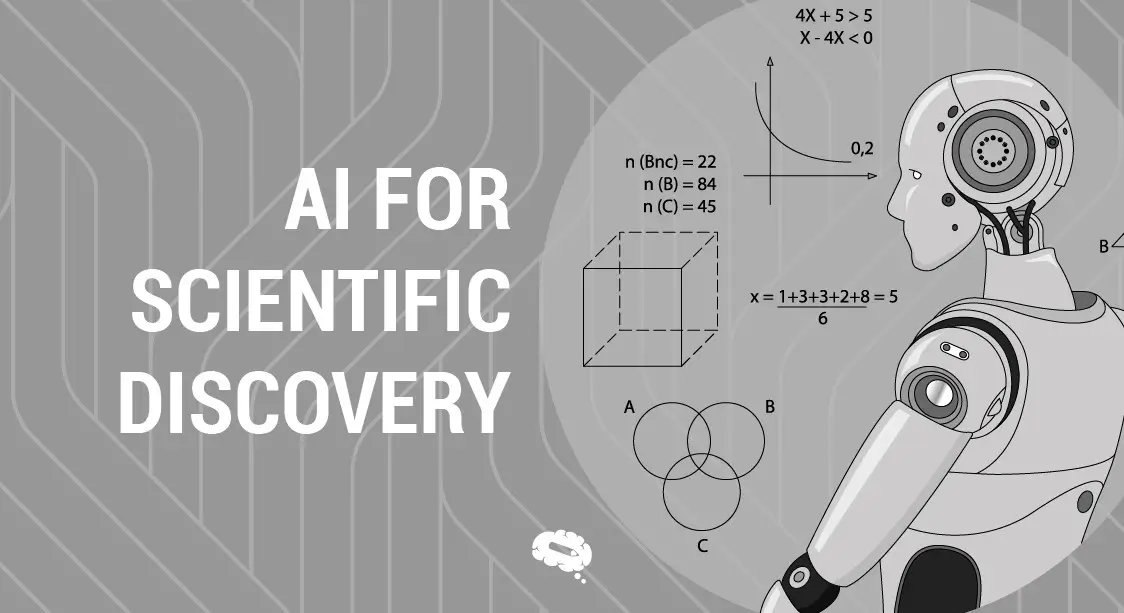At Microsoft, we believe in harnessing the latest breakthroughs in artificial intelligence (AI) to empower scientists and unleash their creative potential to tackle critical challenges facing our world today. To achieve this, we need to integrate generative AI with quantum-classical hybrid computing to augment all stages of the scientific method. Whether expanding knowledge, creating hypotheses, or accelerating experimentation and analysis, our vision will make a transformative impact.
Here, we’ll explore how AI-augmented scientific discovery is made possible through Microsoft’s latest innovations and how researchers can leverage these advancements to pioneer groundbreaking solutions.
Bringing AI to the Scientific Method: A Paradigm Shift
Science, at its core, involves generating hypotheses, conducting experiments, and analyzing data to reach conclusions. However, traditional research methodologies are often time-consuming and resource-intensive. Artificial Intelligence-powered tools can drastically enhance these processes by providing new ways to generate hypotheses, simulate experiments, and analyze data at an unprecedented speed.
The Power of Generative Chemistry and Accelerated DFT
Generative Chemistry: Expanding Horizons
With Generative Chemistry, researchers can explore novel molecules tailored for specific industry applications. Artificial Intelligence models, trained on hundreds of millions of compounds, suggest steps for synthesizing the most promising candidates in a shorter timeframe. This is an unparalleled leap from days to years of traditional research cycles.

– Example Use Case: Researchers may need a new, stronger adhesive for a particular application. Generative Chemistry can suggest novel molecular candidates with the desired properties and provide synthetic pathways to realize those compounds in several days.
Accelerated DFT: Speeding Up Discovery
Density Functional Theory (DFT) is central to simulating quantum-mechanical properties of molecules. Microsoft’s Accelerated DFT speeds up these simulations by an order of magnitude, integrating them seamlessly into broader chemistry workflows. This is beneficial for industries ranging from consumer goods to pharmaceuticals.
– Example Use Case: Imagine a pharmaceutical company needing to understand the electronic structure of a new drug compound. Accelerated DFT provides this information swiftly, enabling quicker iterations and faster-to-market solutions.
A New Era of Scientific Discovery: Real-World Applications
Our collaboration with Unilever showcases practical applications of these Artificial Intelligence tools. Unilever uses Microsoft’s Artificial Intelligence and supercomputing services to advance their digital R&D and product innovation. Through Azure Quantum Elements, their scientists conduct simulations that used to take years in mere days.
– Case Study: Unilever
Unilever’s R&D teams utilize Computation Chemistry and Artificial Intelligence to explore natural bonds in hair fibers, leading to innovative hair care products under brands like Dove and TRESemmé. This accelerates sustainability efforts and product innovation.
Democratizing Scientific Discovery
By integrating AI into every research stage, we aim to democratize scientific capabilities. Advanced AI, coupled with the computational power of Microsoft’s platforms, allows scientists worldwide to make faster, more informed decisions. From hypothesis generation to experimental analysis, Artificial Intelligence serves as an essential assistant, fostering an environment of boundless creativity and innovation.
Responsible AI and Quantum Computing
Microsoft is committed to advancing technologies responsibly. Our AI principles guide us to ensure safety and trust in our innovations. Our focus on scaled quantum computing further advances scientific discovery, from logical qubits to hybrid-computing applications.
– Future Capabilities: By scaling logical qubits with Microsoft’s software and Quantinuum’s hardware, we can unlock more accurate simulations that provide scientific and commercial advantages.
Conclusion: Paving the Way for Future Innovations
AI-augmented scientific discovery is no longer a futuristic concept; it’s here, made possible by Microsoft’s groundbreaking Artificial Intelligence and quantum computing tools. Our commitment to responsible innovation ensures that we continue to empower scientists to make substantial contributions to society while adhering to stringent ethical standards.
FAQs
Q1: What is Generative Chemistry?
A1: Generative Chemistry uses AI models to help scientists generate and test new molecular compounds, drastically accelerating the research process.
Q2: What does Accelerated DFT do?
A2: Accelerated DFT speeds up the simulation of quantum-mechanical properties of molecules, providing researchers with quicker data to inform their experiments.
Q3: How does this technology benefit industries?
A3: These tools support innovation in various sectors, including pharmaceuticals, consumer goods, and energy, by providing faster, efficient methods to design and test new compounds.
Q4: How does AI democratize scientific research?
A4: AI tools make advanced research capabilities accessible to a broader range of scientists, enabling faster and more widespread innovation.
For more information about our latest Artificial Intelligence tools and collaborations, you can join our upcoming webinars or read more on our technical blog.
#MSFTAdvocate #AbhishekDhoriya #LearnWithAbhishekDhoriya #DynamixAcademy

1 thought on “Unlocking the Future: How Microsoft’s AI-Powered Tools are Revolutionizing Scientific Discovery”